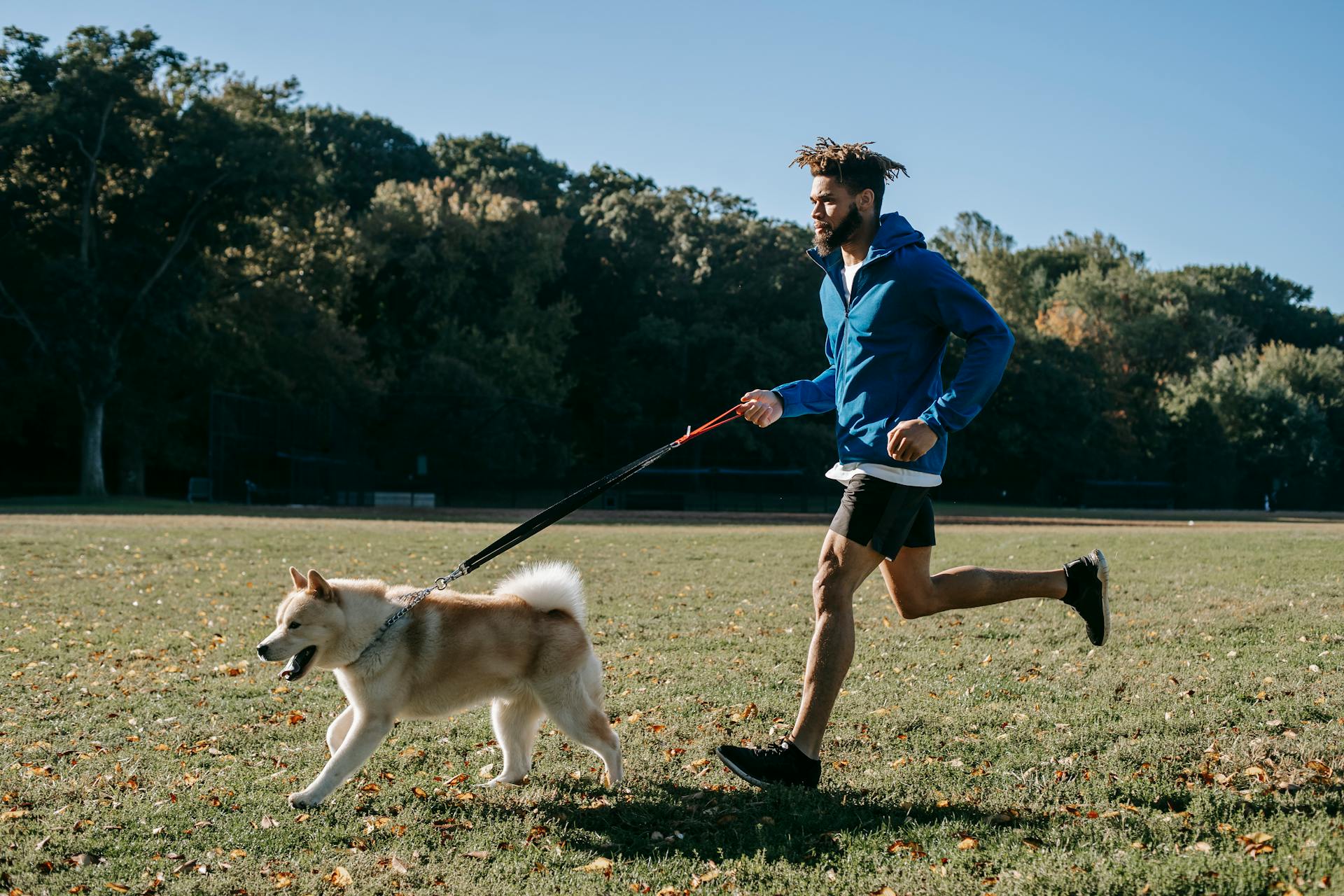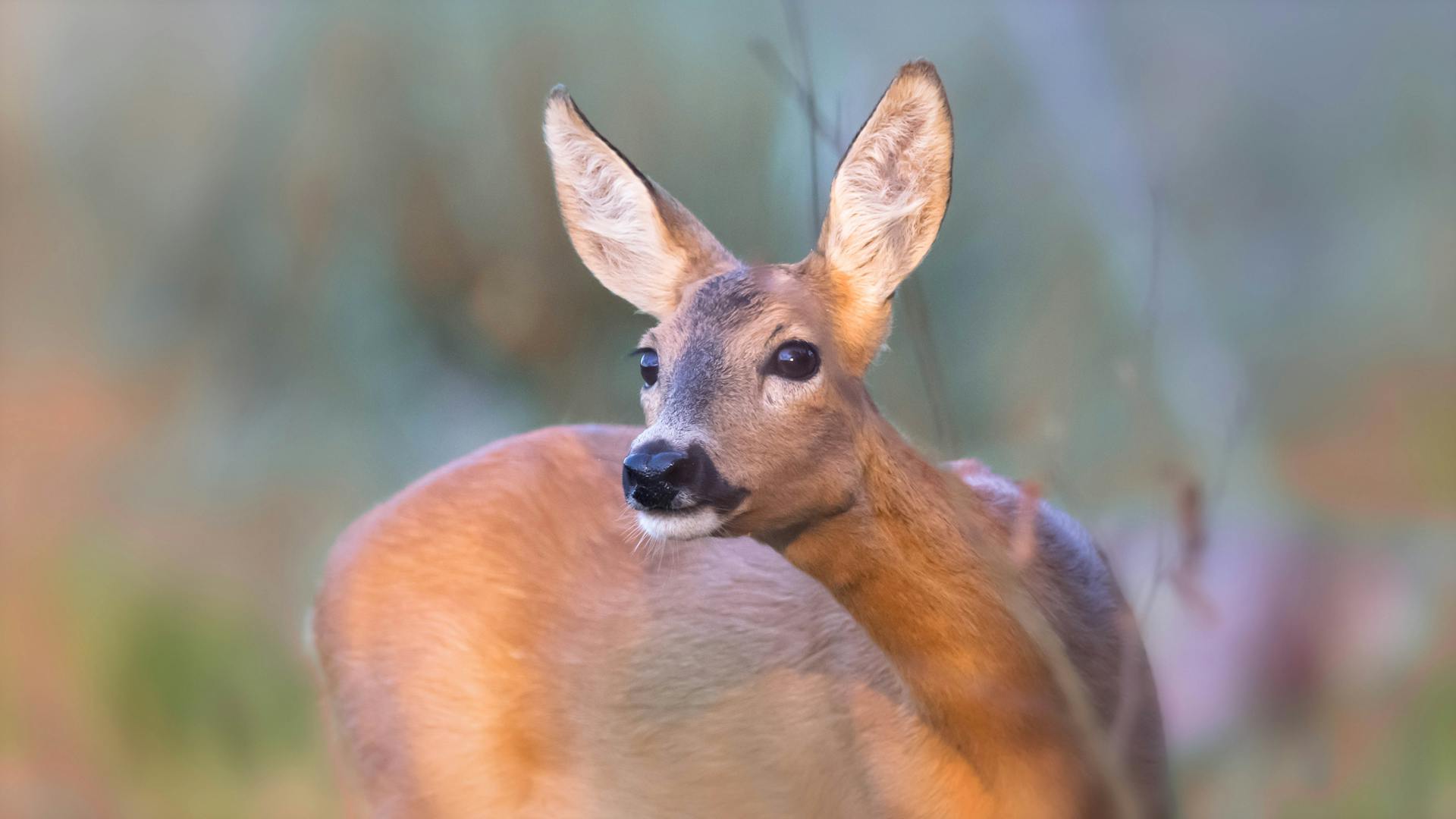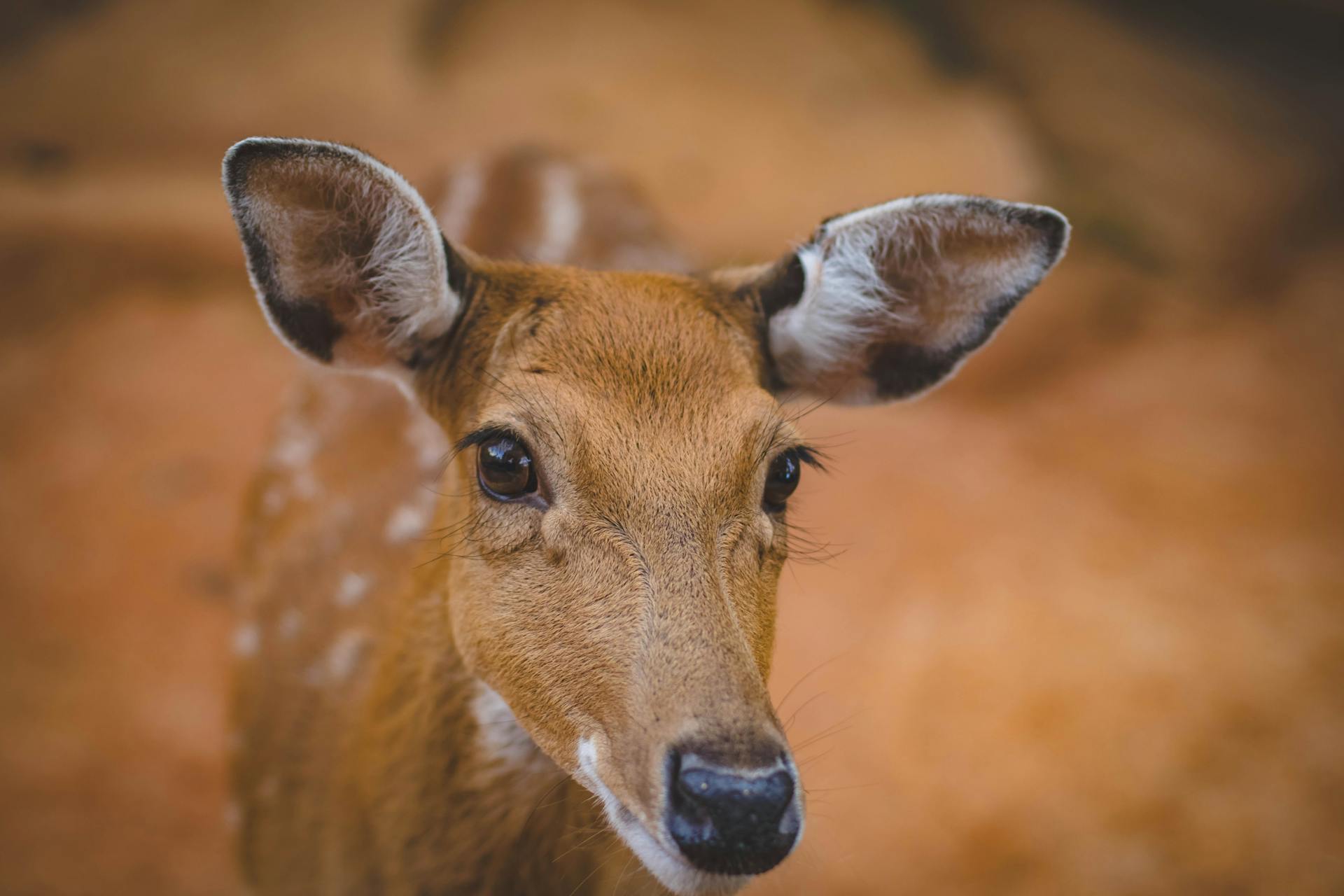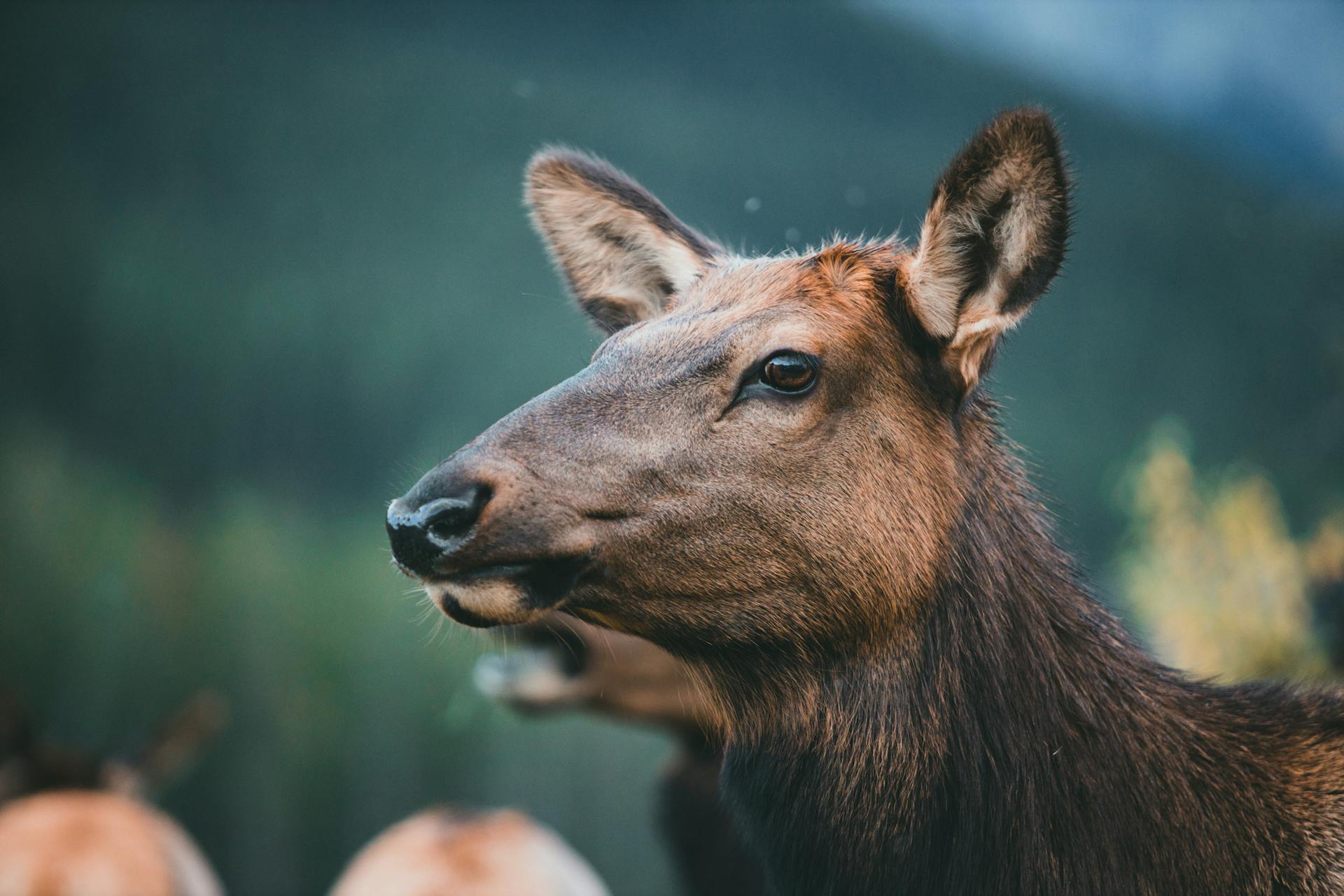
Training a deer tracking dog requires patience and consistency. A well-trained dog can detect the scent of deer from a great distance, which is why it's essential to start training early.
To begin, you'll need to introduce your dog to the scent of deer, which can be done by rubbing deer scent on a tree or rock. This will help your dog associate the scent with the reward of finding the deer.
The key to successful deer tracking is to teach your dog to follow the scent trail without getting distracted by other smells. This can be achieved by using a long line or leash to keep your dog focused on the task at hand.
It's also crucial to teach your dog to stay calm and not get excited when they catch a scent, as this can cause them to lose the trail.
Consider reading: Dogs Attack Deer
Teaching Dogs to Track
To start teaching your dog to track, you'll need a few essential items, including deer liver, deer blood, lead, GPS apps or flag markers, paracord rope, and a flashlight. These will help create a mock trail for your dog to follow.
Deer liver serves as the reward or find at the end of the trail, and some dogs prefer it over other alternatives like deer legs. It's essential to have a big-ticket item that your dog can associate with deer.
To create a scent trail, dip your paracord rope into the deer blood and drag it behind you. You can also use a squirt bottle filled with blood to guide your dog's nose.
Most states require a lead on dogs when tracking in the woods, and the length of the lead depends on the state. Research your local laws and practice with your dog on a lead to ensure they're comfortable and focused.
Practicing at night with flashlights is crucial, as this will be a common scenario in real-life tracking situations. Let your dog get used to the gear and noise of ATVs and side-by-sides, as they may be riding in these vehicles during training.
You can start training a puppy as early as 2 months to follow a track, but it's recommended to wait until they're a bit older and more focused.
Here's a list of essential items you'll need to get started:
- Deer liver
- Deer blood
- Lead (length and use depending on state laws)
- GPS app or flag markers
- Paracord rope
- Flashlight
Putting your dog on real tracks during hunting season is essential for building their confidence and seeing how they work on the trail. This will also give you an opportunity to identify any visual cues they may display when on a hot scent.
Choosing the Right Breed
A blood hound is one of the best breeds for blood trailing, but don't count out other breeds like wire hair daschunds, Bavarian Mountain Hounds, and Deutsch drahthaars.
Independence is a key trait to look for when choosing a breed, as it allows them to work effectively on their own.
A unique perspective: Deer Tracking Dog Breeds
Training Your Dog
To start training your dog for deer tracking, you'll need a few essential items, including deer liver, deer blood, a lead, and a GPS app or flag markers.
Deer liver serves as a reward for your dog, associating it with the scent of deer. Some dogs prefer deer legs, but liver is a popular choice.
You'll also need to teach your dog to wear a lead, as most states require trackers to keep their dogs on a leash. The length of the lead depends on the state, so make sure to research the laws beforehand.
It's best to start training your dog early, ideally around 2 months old, to follow a track. However, waiting until they're a bit older and more focused might be a better approach.
Acclimating your dog to wearing a lead attachment on a vest, like a reflective vest, can be done with positive reinforcement.
Curious to learn more? Check out: When to Start Training Puppies
Track a Deer
To get your deer tracking dog started, it's essential to build their confidence with easy tracks that guarantee success. This will allow you to see how your dog works on the trail and identify any visual cues they give when they're on a hot scent.
Most dogs will give subtle cues like a crouched posture or sudden snap of the head when they're on a hot scent. Levee, for example, barks when he's about to find a deer.
You should put your young dog on every track you can come hunting season, even if you see the deer fall dead. This will help them understand that tracking is a fun and rewarding experience.
A few easy tracks with guaranteed success will also help your dog learn to focus on the scent and not get distracted by their surroundings.
Broaden your view: Do Dog Diapers Help with Potty Training
Frequently Asked Questions
What age should you start training a blood tracker dog?
Start training a blood tracker dog as early as 2 months, but ideally wait until they're a bit older and more focused for optimal results
Do blood tracking dogs work?
Yes, blood tracking dogs are effective, with recovery rates typically ranging from 30-35% in experienced hands. Their success is comparable to other skilled trackers across the country.
Sources
- https://www.mossyoak.com/our-obsession/blogs/how-to/how-to-train-your-dog-to-blood-trail
- https://www.themeateater.com/wired-to-hunt/whitetail-hunting/how-to-train-your-dog-to-blood-trail-deer
- https://dwr.virginia.gov/blog/training-a-dog-to-track-deer/
- https://southeastwhitetail.com/2021/07/22/deer-tracking-dog/
- https://www.outdoorlife.com/how-to-train-your-dog-to-blood-track-deer/
Featured Images: pexels.com


